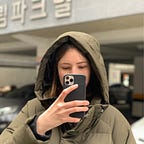The Human Senses: And so it begins…
“Consider + document how you will be aware of your group regardless of distance using any combination of the 5 senses”
Group members 🤝: Damul Yang, Maria Carolina, Sebastian Ervi, Maria Shuttleworth
The first task.
Our first in-person lecture had us sit down for a welcome, followed by our first brief which set the stage for the following day. We were put into groups, and told to meet the next day at the following location:
51°31’20.4”N 0°06’07.0”W.
Sight.
We spread out around the four-way junction, each on a corner next to the pedestrian crossing. To stay connected from this distance I suggested we all wore something blue, and we all decided to wear crowns (+ a red hat), as well as a mask with a symbol drawn on.
Sound.
Since shouting is the obvious option, Maria (Carolina) decided to try clapping; this worked even while walking further & further away.
Touch.
To maintain a sense of touch I brought along a roll of string. We all held on to different parts of it, communicating with each other by flicking/ pulling it. We were able to all stay connected regardless of distance, just as long as we were all holding on.
Smell.
Damul and I brought two different perfumes, and after making sure everyone was familiar with them, we put the perfume on our wrists and held them up to a team members nose. Keeping their eyes closed, they had to guess whose was whose.
Taste.
With our eyes closed, we tried some Finnish candy called Salmiakki (famous for its divisive flavour) that Sebastian brought. There was a countdown and we all tried it at the same time, scrunching up our faces from the strong liquorice flavour immediately; we were connected through our timely, similar responses.
The second task.
After having experimented with the five senses, we were then told to focus on Proprioception, Balance and Temperature, and how we can still feel a sense of togetherness when isolating and experimenting with these 3 senses.
Proprioception.
This was a bit of a tricky one, so we came up with a few more ideas.
- I suggested we each held a part of the string, making sure we were an equal distance apart, and closed our eyes. Without any visual aids, or talking to each other, we had to use our sense of space to spread out and make a square.
- Maria Carolina suggested we play the Brazilian game of futpano once with our eyes open, and then try again with our eyes closed. We had to sense where the ball on the sheet was in relation to our hands & body by its weight, and play accordingly.
- Damul showed us a Korean game called 코끼리코 (Elephant’s nose) where you lose your balance by doing a funny pose and spinning. We did this with our eyes closed and then tried to find each other using our proprioception (whilst our balance was off).
Balance.
We found a curved bench that I thought would be interesting to walk across to test balance. I closed my eyes and held onto a piece of string that Damul and Maria Carolina were holding onto on either side. I slowly walked along the bench stepping slightly right or left depending on vibrations felt from the string e.g. if Sebastian tapped the string then I would veer right, and Damul left.
Temperature.
To feel connected through temperature we came up with the idea of each taking it in turns to sit on a cold bench, heating it up with our body temperatures. When the next person would sit down, they’d feel that the other person had been there.
Finally, this wasn’t planned but when we sat down for our lunch and coffee break, we sensed a feeling of togetherness by looking through our pictures from the day, eating, drinking and talking together, as well as just being in the same cafe environment with the same music, and warmth from the inside.
Outcome.
We found that it was much easier to maintain contact through the first five senses than it was with the final three: Proprioception, Balance and Temperature. These three required a lot more thought, but I think the impact of the contact reached through these methods was more meaningful, and I personally felt more connected.
Part 2 of this project in my next post: The Human Senses: Presentation. >>>
References
- Yanagisawa, H., Miyazaki, C. and Bouchard, C., 2017. KANSEI MODELING METHODOLOGY FOR MULTISENSORY UX DESIGN. Proceedings of the 21st International Conference on Engineering Design (ICED17), 8: Human Behaviour in Design, Vancouver, Canada, 21.-25.08.2017
